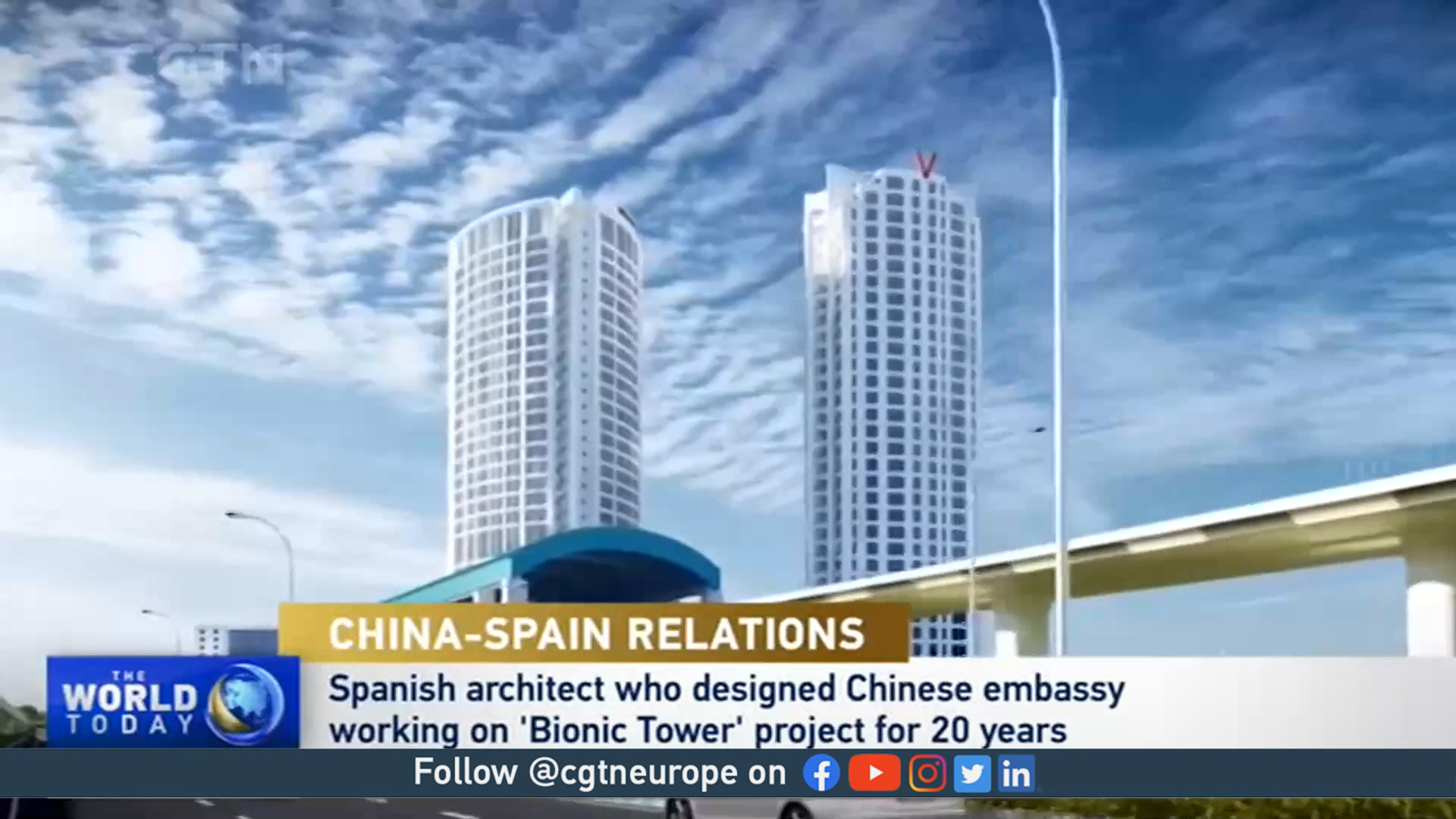02:23

"We cannot pave the planet," Rosa Cervera tells CGTN, as she explains her vision. Designing the future is what this Spanish architect has been doing for the past four decades.
Her work is visible from India to Bolivia, and her creations also stand proudly in Chengdu, Hangzhou, and Shanghai in China.
Rosa Cervera: Trailblazer
Cervera's vision is beautiful, functional, and sustainable buildings that have a more sustainable model of living in mind. She is a trailblazer in an industry that is notoriously difficult for women to find success, and now lectures in Spanish universities too, inspiring the next generation of architects.
Cervera has a deep connection with Chinese culture, has visited China many times and even designed the Chinese Embassy buildings in Madrid.
READ MORE
What is the Georgia 'foreign agents' law?
Where were the 10 deadliest earthquakes?
China helps Ukraine's imperiled nuclear plants
"China has helped me to become the woman that I am now, the person that I am. I learned a lot from China and I admire their culture, philosophy and way of being."

Rose Cervera is a visonary Spanish architect who has designed buildings in Chengdu, Hangzhou and Shanghai in China./ CGTN.
Rose Cervera is a visonary Spanish architect who has designed buildings in Chengdu, Hangzhou and Shanghai in China./ CGTN.
The 'Bionic Tower'
One of Rosa Cervera's most futuristic visions is called the 'Bionic Tower,' she has been working on this futuristic project for over 20 years. It is a visionary vertical city that could potentially house more than 100,000 people.
This 'city of cities' would be 300 stories and over 1,000 meters high, powered by a turbine in the inner core, solar panels and wind turbines at the top of the building, and biomass, reutilizing the waste created by its residents.
The idea is to build the tower on an artificial island which would protect it from high winds and earthquakes.
One of the 'cities' contained in the gargantuan structure would be dedicated to farming and it would be 100% sustainable and self-sufficient.
Interest has been expressed by officials in both Shanghai and Hong Kong, and while the 'Bionic Tower' hasn't yet been built, with prototype construction interrupted by permission setbacks and the pandemic, Cervera tells CGTN that she's confident her vision will soon become a reality.

Cervera's most futuristic project is called the 'Bionic Tower'. The vertical city could house over 100,000 people and powered by renewable energy.
Cervera's most futuristic project is called the 'Bionic Tower'. The vertical city could house over 100,000 people and powered by renewable energy.
Building cultural bridges
While Cervera has been designing physical structures for decades, she has also been building cultural bridges too.
Since 2020 she has been President of 'Cátedra China,' a Spanish think-tank and association that promotes greater understanding between China and the West.
"The main goal of Catedra China, is to bring both countries together and to get the Spanish people more friendly with the Chinese world and Chinese culture," Cervera tells CGTN at the Couder Tennis club in Madrid which she designed with its soaring oxidized-steel central wall that anchors the angular construction.
"The hope is really to avoid prejudices and for the people to meet, the real people," she adds. "We are closer to the Chinese than we think here in Spain, the love of food and big family gatherings are very similar for example."
An affinity for Chinese culture and a vision for the future have sustained the remarkable work of Rosa Cervera. Her physical and cultural bridges are built to last.
To get the latest from China and Europe, subscribe to our new weekly newsletter